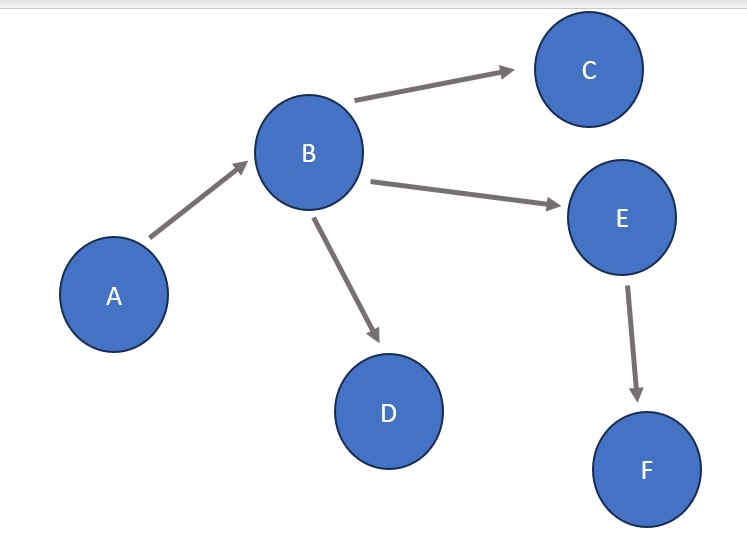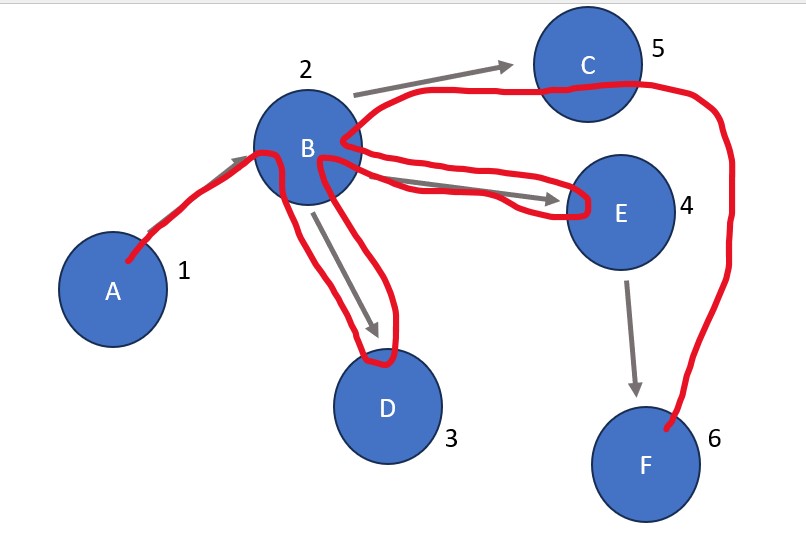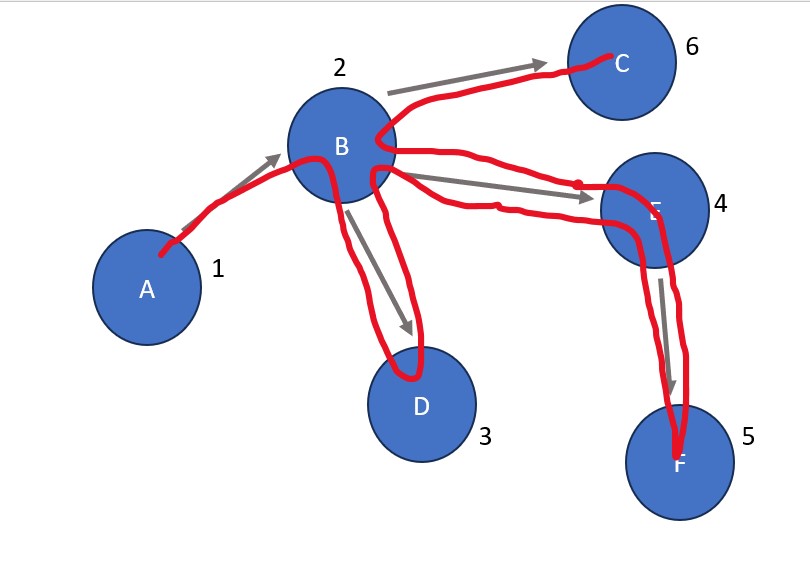Procedures for BFS/DFS starting from Node A:
Note: Depending on how the BFS/DFS is implemented, the children of a node could be explored left to right or right to left. In the examples below, we will explore left to right.
Initial Graph

Breadth-First Search: A is the starting node. Its only connection is B, so B is visited next. After B, D is visited due to it being the left-most child of B (see note above). The visit to D is followed by a visit to E and then C, the middle and right child nodes of B (notice that we explored all nodes directly connected to B before advancing any further). After B has been completely explored, D is checked for connections because it was the third node visited (after A and B - both completely explored already). D has no further connections so E is explored next due to it being the fourth overall node visited. E has one connection: F. After exploring E, C and F are explored in that order. Since neither have child nodes, the process is finished.

Order: A B D E C F
Depth-First Search: A is the starting node. Its only connection is B, so B is visited next. After B, D is visited due to it being the left-most child of B (see note above). The visit to D is followed by a visit to E (the next child node of B) due to D having no further connections. After E has been visited, E's child F is visited. Since F and E have no more connections, the search returns to B which has one more connection: C. Because C has no child nodes, the process is finished.

Order: A B D E F C
Fun Fact #1: A breadth-first search is implemented using a queue. This is because a queue's "first in first out" principal helps keep track of nodes that are within reach and releases them in an order that ensures local nodes are being visited first.
Fun Fact #2: A depth-first search is implemented using a stack. This is because a stack's "last in first out" principal helps keep track of nodes that have already been visited and releases them in an order that ensures their connections are being explored to maximum depth before returning to previous nodes.